Growing up, I had the privilege of visiting my mother’s family in Mexico City during the summer breaks from school. I say privilege because growing up in a multicultural household afforded me an education that most in my rural Ohio community never get to experience. The first obvious benefit was learning two languages simultaneously as “first” languages. Deeper than that though, was getting to experience two distinct and contrasting cultures firsthand – and being able to claim both as my own.
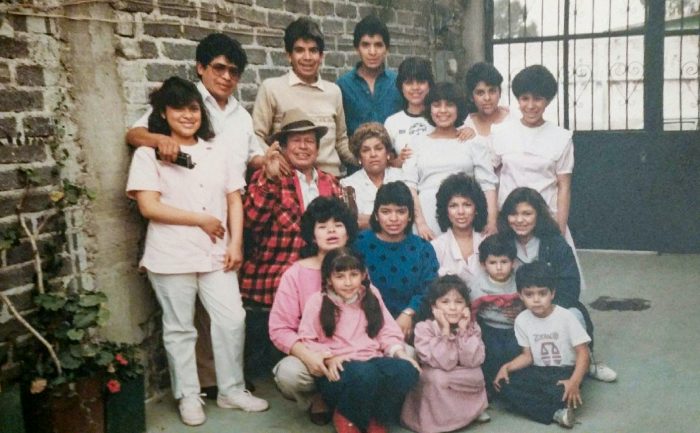
This experience taught me that one of the most important things we as humans can do is to try and understand other cultures. Understanding each other’s cultures, viewpoints and struggles unshackles our mind from our innate tendency towards being self-centered and helps us to expand our worldview, instead of staying in our comfortable little bubbles, imagining that our own problems are all that matter.
Expanding one’s worldview is not an easy task, for two reasons – the first is proximity. It’s expensive, time-consuming, and simply not viable for most to travel around the world having new experiences. The second is language. Not being able to have meaningful conversations is an obvious roadblock to empathy.
However, there is one thing that we can all share, understand and appreciate, wherever we are in the world – FOOD.
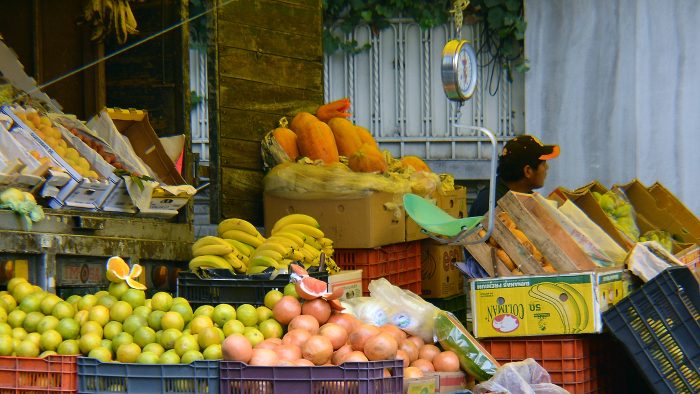
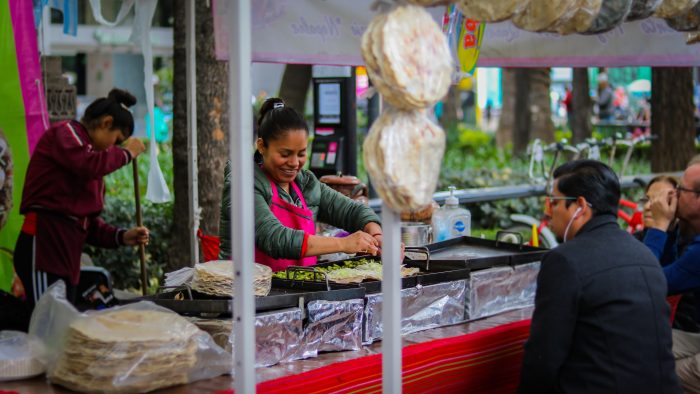
One of my favorite aspects of Mexican culture is the richness and variety of the food. Even the shopping experience was so much different than what I was used to in the States. In Mexico, my family didn’t really keep lots and lots of food on hand like we often do here.
They could just get up early every morning, walk down to the corner bakery for some fresh bolillo bread, milk, juice, and tortillas, and go to the open market for meats, peppers, and whatever else they need for the next day or two. This way, everything is always fresh and delicious.
I even remember having the most delicious coffee made from fresh, green, unroasted beans, alongside fresh squeezed orange juice for breakfast.
Of all the spectacular dishes my aunts prepared during our visits, and the amazing street food available throughout the country, though, the one thing that stood out as my all-time favorite was Pozole – specifically pork pozole in red broth. Even just thinking about it now makes my mouth water.
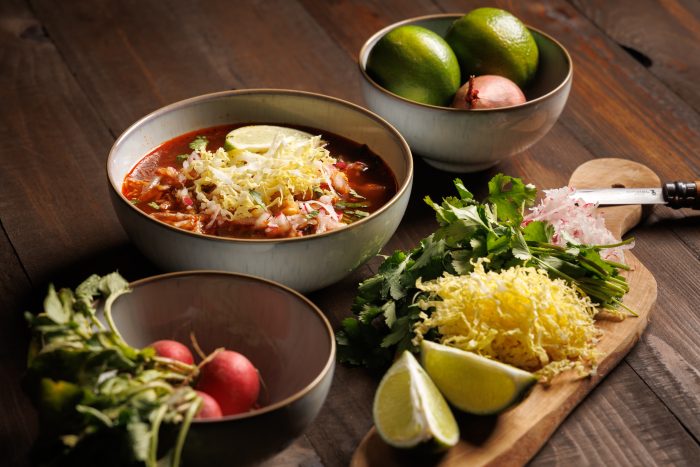
History of Pozole
Pozole has deep roots in pre-Columbian Mesoamerican culture and continues to be a popular dish throughout Mexico. The origins of pozole can be traced back to the Aztecs, who were the dominant civilization in Mexico for over 200 years prior to the arrival of the Spanish in 1519. The word pozole comes from the Nahuatl word pozolli, which means “stew of maíz kernels”.
Originally, pozole was considered a sacred dish due to the use of the trademark large hominy kernels combined with meat. A slightly gruesome claim from pozole’s history is that it was supposedly once made with the human flesh (hearts) of sacrificed prisoners during special celebrations – although there is no evidence that this actually happened. However, it is and was typically made with other meats such as pork, chicken, and beef.
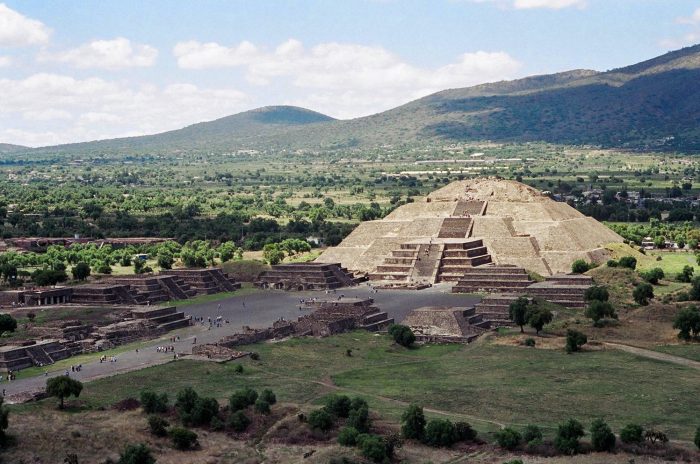
The Aztecs used hominy, a type of corn that has been treated with an alkali solution to remove the hull and germ, to make the stew. Hominy was a staple food in the Aztec diet and was used in a variety of dishes.
Hominy was an important development in the history of pozole. It allowed for the creation of a soft, yet hearty corn base for the stew. The process of making hominy involves soaking dried corn kernels in an alkali solution, such as lime or wood ash, which causes the kernels to swell and release their hulls. The kernels are then rinsed and cooked until they are soft and fluffy.
This process was developed by the Mesoamerican people around 1500 B.C. This process, called nixtamalization, was very important because it allowed their bodies to access and digest the niacin in the maize. Niacin deficiency led to severe malnutrition, so this is another reason that hominy was such an important resource for them. Even the remnants of the process (hull & germ) were ground up into a flour known as masa harina, and used to make tortillas.
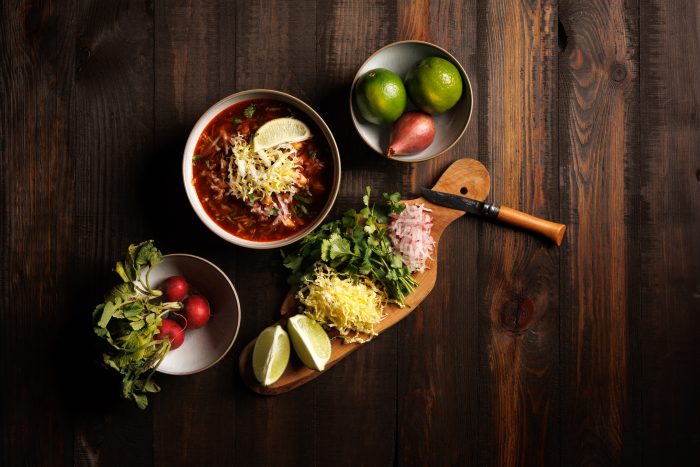
The use of hominy in pozole was not only practical but also had cultural significance. The corn used to make hominy was considered a sacred crop by the Aztecs, who believed that it was a gift from the gods. The use of hominy in pozole was a way to honor the importance of corn in their culture.
The current tradition of eating pozole in September is linked to the corn harvest, which is normally sown at the beginning of the year and which already has fresh corn by this date. It is the only date of the year where you can find the cacahuazintle corn – a variety of white, large, and floury grain grown mainly in the center of the country.
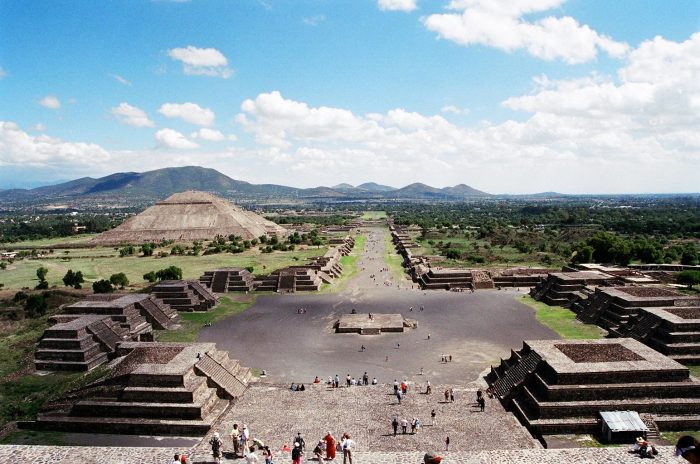
The history of pozole is a fascinating tale of culture, tradition, and innovation. The dish has evolved over time, but its core ingredients, including hominy, have remained an essential part of the stew. The use of hominy in pozole is a testament to the importance of corn in Mesoamerican culture and its continued significance in Mexican cuisine.
The Best Pozole You’ll ever try
1
hour4
hoursMy recipe is different from most others, because of the cut of pork I suggest, and the preparation of the pork. I also use a larger variety of peppers than is typical.
You’ll need an 8-quart stock pot or larger for this recipe.
This is a lot of work, and it is not for the faint of heart. The result is well worth it and is my all-time favorite dish.
Ingredients
- Pork Prep
2 lb Boneless Pork Loin
1 tbsp Paprika
1 tbsp Kosher Salt (not table salt)
1 tsp ground Black Pepper
1 tsp Cayenne Pepper
1 tsp Garlic Powder
1/2 tsp Oregano
- Soup Prep
2 Guajillo Chiles (dried)
2 Ancho Chiles (dried)
2 Arbol Chiles (dried)
1 can of Mexican Style Hominy Corn (110 oz)
6 large cloves of Garlic
1/2 of a large Onion
1 large Tomato
1 tsp Oregano
1 tsp Cumin
Salt and Pepper to taste
- Toppings
10 Radishes
1/2 Onion
4 Limes
1 head of Nappa Cabbage
Several bunches of Cilantro
Directions
- Braise the Pork
- Put the 1 tbsp Paprika, 1 tbsp Kosher Salt, 1 tsp ground Black Pepper, 1 tsp Cayenne Pepper, 1 tsp Garlic Powder, and 1/2 tsp Oregano into a bowl or dish, and mix well.
- Add Avocado oil to a large cast iron skillet or dutch oven (cover the whole bottom with a thin layer) and preheat on medium-high heat. On our induction cooktop, I usually use setting 6 out of 10. Let it get very hot.
- Cut the Pork Loin into 4-inch long segments. Press each segment into the spice mix, covering all sides.
- Add all the pork to the preheated skillet and sear for about 4 minutes, until a crust forms. Flip all the pieces over and sear the other side for 4 minutes. (Add more Avocado Oil when you flip if needed.)
- Remove pork from skillet with tongs and set aside.
- Soup Prep
- Place the braised pork pieces into an 8 qt stock pot (or larger). Add filtered water to the pot, enough to cover the pork with 2 inches of water. The precise quantity of water isn’t that important, just make sure the pork is completely covered, and then add two more inches worth.
- Add 1 clove of Garlic, 1/4 of an Onion (not diced), two Bay Leaves, Salt and Pepper to taste. Simmer this mixture for 3 to 4 hours, until the pork is tender and falling apart. (Continue with the chile preparation during this time, to have it ready to add.)
- Remove the bay leaves (or they will kill you), garlic clove, and the onion.
- Remove the chunks of pork with tongs, and cut them from 4 inches down to 1/2 inch across the grain. At this point, it will just look like a pile of shredded pork. Put it all back into the stock pot.
- Drain the can of Hominy and add it, mix, and bring to a boil for 10 minutes.
- Prepare the Chiles
- Use scissors to cut the stem off of all six peppers, then cut in half lengthwise. Remove all the seeds.
- Add the peppers to a pot of boiling water, and boil for 5 to 7 minutes or until they are soft.
- Put all the peppers, the tomato, 5 cloves of garlic, 1/4 of the onion, 1 tsp cumin, salt & pepper to taste, and 1/2 cup of broth from the stock pot, and blend until it looks smooth.
- Strain the mixture into a large bowl. Use more of the broth to ‘rinse’ out the blender. Make sure you get it all, this is where much of the flavor comes from. Use the back of a large metal spoon to work the moisture through the strainer, then scrape anything coming through, but still stuck to the strainer, and add it to the bowl. You should only be left with a bit of pulp and a few seeds to discard. This takes some work. Don’t touch your face after this, it will burn.
- Finale
- Add this liquid to the stock pot, and boil for 10 more minutes.
- Serve hot, topped with grated radish, very finely chopped nappa cabbage, onion, cilantro, a quarter of a lime, and a liberal amount of salt to taste. Add more toppings as you go. You’ve now enjoyed an ancient MesoAmerican delicacy and one of the most delicious meals known to man. You should be proud of yourself.
- Serves 8
Notes
- Add more peppers if you want it even hotter.
- Add cayenne powder to your bowl if you want it hotter.
- If your nose and eyes aren’t running by the end of the first bow, you did it wrong, lol. Basically, the hotter it is, the better it tastes.
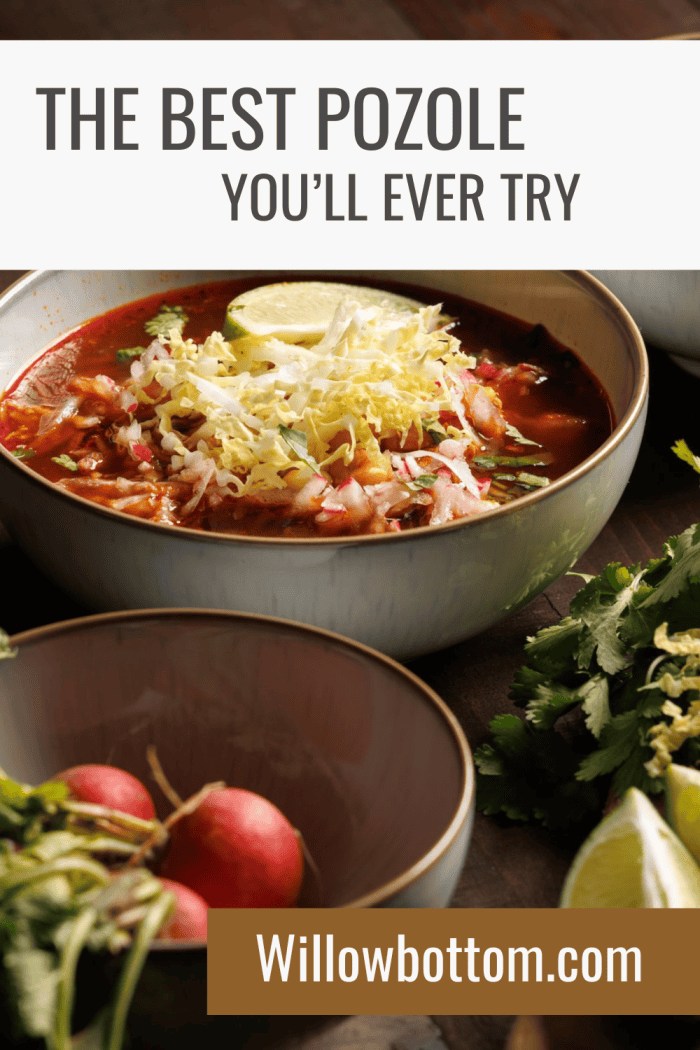

Did you make this recipe?
Tag @willowbottom_homestead on Instagram and use hashtag #willowbottom

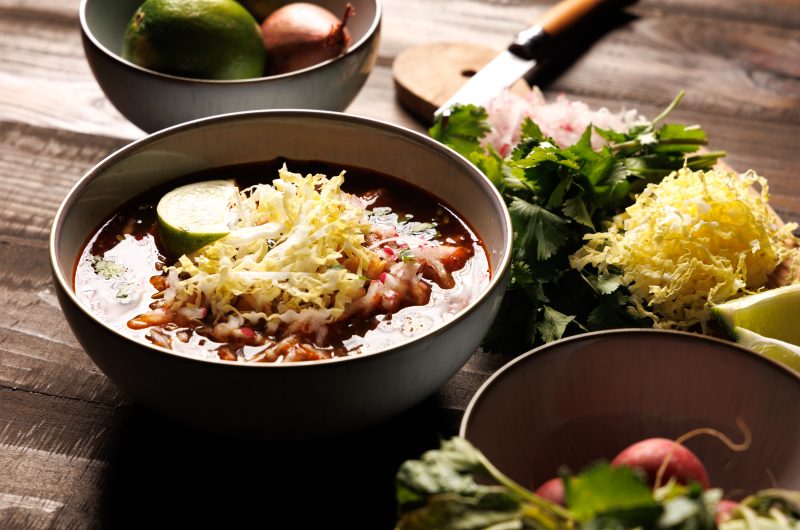
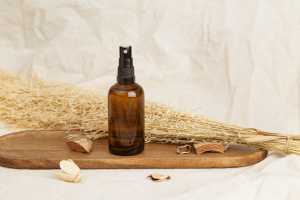

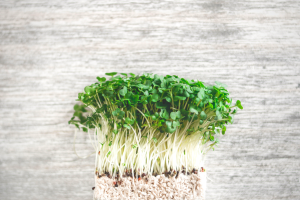
Beautiful photography and super interesting read on the history! Can’t wait to try this